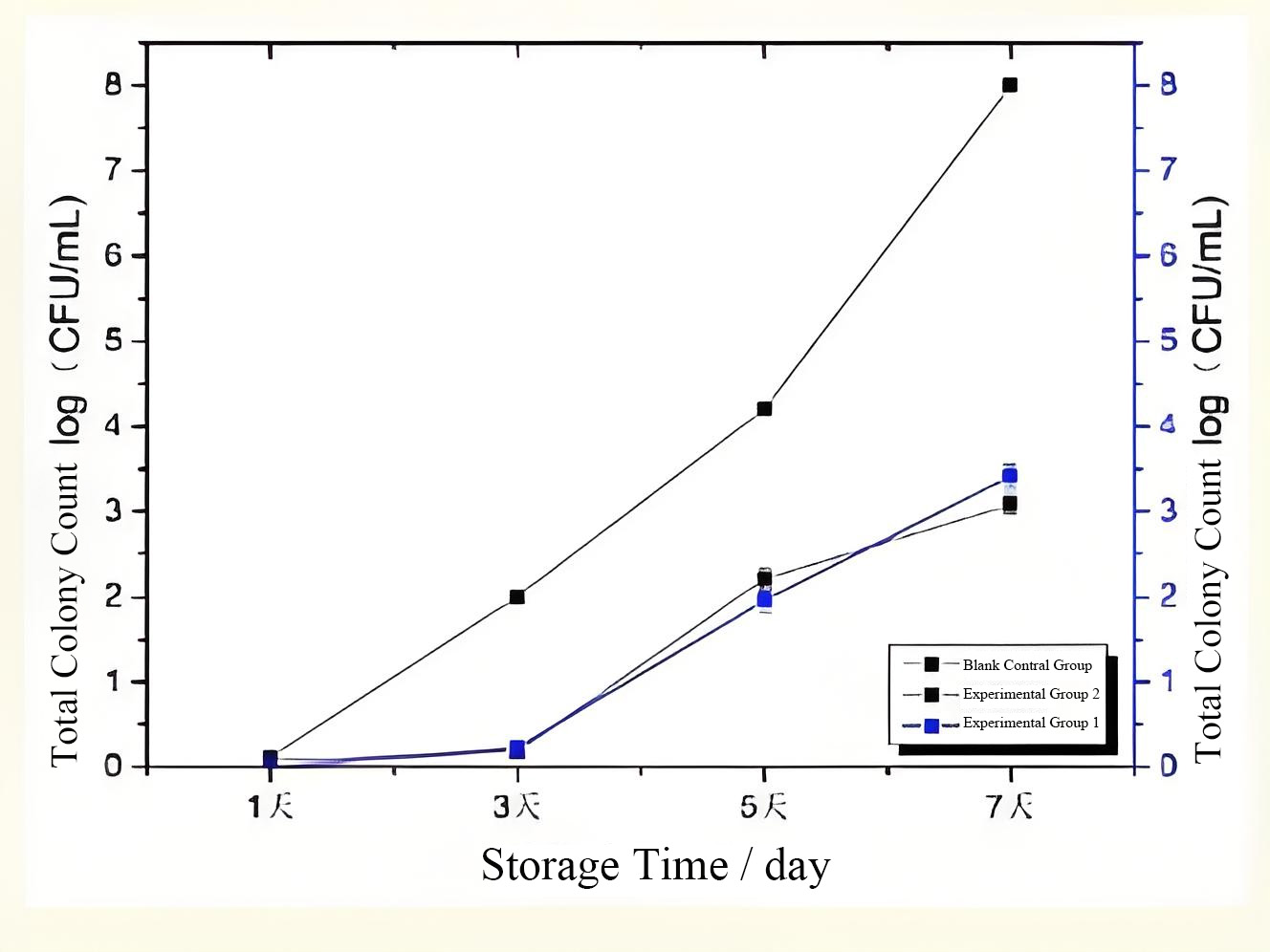Experimental purpose: To test the preservation effect of cultured sugar powder APN-F2 in gluten
Experimental conditions: 4°C for one week
Experimental groups:
Blank group (no preservatives added)
Experimental group 1 (adding 0.6% cultured sugar powder APN-F2)
Experimental group 2 (adding 0.01% Nisin)
The three groups of samples were compared, and the results are as follows:
The inhibition of the total number of bacteria in gluten products by different antibacterial products

Sensory evaluation
| Samples/Time | 1 day sensory evaluation | 3 days sensory evaluation | 5 days sensory evaluation | 7 days sensory evaluation |
| Blank group |
The color of gluten is white with a slight gray color; the tissue is uniform in size, elastic, and can recover after deformation. The texture is honeycomb-like, non-sticky, and free of impurities. The gluten processed from fresh flour has a slight flour aroma and no other peculiar smell; it has the inherent flavor of gluten and a chewy texture. | The color becomes darker; the elasticity is poor, it is not sticky, and the size is uneven; the inherent smell of gluten is bland, with a slight odor; the taste is bland and slightly sticky to the teeth. | The color is gray; it loses its elasticity, is sticky to the touch, and has impurities; the inherent smell of gluten is bland, with a slight peculiar smell; the inherent taste of gluten is bland, with a slight peculiar smell. | The surface color is darker; the elasticity is poor, it is sticky and easy to break; it has bad odors such as sourness and stale flour; it is sticky. |
| Experimental group 1 | The color is white; the texture is uniform in size, elastic, non-sticky, and free of impurities; it has gluten texture, a slight flour aroma, and no peculiar smell; it has the inherent flavor of gluten and no peculiar smell. | The color deepens; the tissue state is slightly worse, the elasticity becomes weaker, and it is not sticky; the gluten tastes bland and has no peculiar smell; it has the inherent taste of gluten and no other peculiar smell. | The color deepens; the tissue state is slightly worse and the elasticity is weakened; the gluten tastes bland and has no peculiar smell; the inherent flavor of gluten becomes lighter and has no peculiar smell. | |
| Experimental group 2 |
Experimental conclusion
★ The total colony count of blank gluten samples without cultured sugar powder APN-F2 stored at 4°C for 7 days exceeded 107 CFU/mL,and the gluten showed stale flour and sour taste in the sensory evaluation, which was inedible;
★ The total colony count of gluten samples added with 0.6% cultured sugar powder APN-F2 and 0.01% Nisin was about 103 CFU/mLafter 7 days of storage at 4°C, which extended the shelf life to the 7th day compared with the blank group at 4°C;
★ Analysis of sensory evaluation indicators showed that the gluten of the experimental group was still in a sensory acceptable state when stored at 4°C for 7 days, and the sensory index results of experimental group 1 (0.6% cultured sugar powder APN-F2) and experimental group 2 (0.01% Nisin) were relatively consistent.
In summary, the experimental results show that a certain concentration of vinegar powder can be consistent with the antibacterial preservation effect of Nisin in extending the shelf life of gluten food, and has a better preservation effect after being used for gluten.
Free
sample